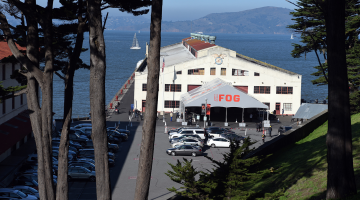Feb15- March 23 2013
Ratio 3
2831A Mission Street,
San Francisco, CA 94110
The Raw and the Cooked
Contributed by Lani Asher
Noam Rappaport has a solo show in the newly relocated Ratio 3 gallery, a cavernous space in a former fabric store located between Salvadoran restaurants, hair salons, and taquerias situated near the working class corner of 24th and Mission Streets in San Francisco. Rappaport grew up in the Mission district, and the jumbled sense of urban architecture and culture naturally informs his sensibility. All the work in the current show at Ratio 3 has been fabricated since Rappaports’ move to Los Angeles from New York last year. In 2012, he participated in a group show called “ B. Wurtz and Co” at Richard Telles Fine Art in Los Angeles, curated by Mathew Higgs, from White Columns Gallery in New York. The show featured Fluxus flavored work by B.Wurtz and a group of like-minded artists who worked with recycled and found materials such as scrap wood and canvas, plastic bottles, and yarn. The focus of this show dovetailed with Rappaport’s interest in recycled materials, painting, and the paradoxes of culture and intuition. Rappaport’s work can look provisional, but is the result of sturdy craftsmanship and intellectual curiosity infused with a delicacy of feeling.
Rappaport’s pieces are composed with deliberate confidence, he’s brave yet still intimate. This sense of intimacy is achieved through his paint application, the sensuous grey scale of his colors, and unfinished edges left in many of the works. The work is playful, with an understated insistence on its materiality. Upon entering the gallery I encountered several small improvisational collages made from scrap materials from the artists studio, which show his bold direct approach. His larger pieces generally start with a drawing and develop as he adds stretcher bars. These larger, formally abstract, geometric shaped canvases reference landscape, the human body, and the physicality of painting. His work is evocative of recent work by Richard Tuttle, since he is also unwilling to abandon allegiance to the pictorial plane or formal concerns. While several of the pieces appear to be tilted on their sides, Rappaports’ instinct is to re-establish the horizon with a painted or drawn line. Often the pieces have circles cut out of the plywood backings which create depressions when covered with canvas. Other pieces have cut out areas where the gallery walls show through. Urban sidewalks and architectural elements like doors and windows, and the white walls of the gallery are echoed in the works. His collage syntax explores the relationship between abstraction and the materials he uses, and at times his work hovers between painting and sculpture.
Most of Noam Rappaports works are untitled, throwing me back on the physical presence of the work itself, forcing me to access the work as he does. His work supports the philosophical proposition that maybe less is more. His unwavering attention to concrete detail resists the dehumanizing forces of an increasingly virtual and impersonal world. Anthropologist Claude Levi-Strauss’ metaphor of the “raw and the cooked” comes to mind, as it is used to describe binaries found in all cultures; for example, the fresh and the rotten, or the moist and the dry. Levi-Strauss concludes that the human impulse is to reconcile these opposites. Rappaports’ sleight of hand takes us through soft and hard, transparent and opaque, dark and light, and the material and the spirit–the stuff of transformation. Like a cook’s, the artists’ role is to mediate between nature, which is emotional and instinctive, and culture, which is based on rules and conventions. Rappaport offers a quiet invitation to consider these paradoxes, and overall succeeds in the gamble of finding resolution between nature and humanity. He reveals how a pure embodiment of painting conventions is nothing short of enlivening.
Further Reading:
The Raw and the Cooked-Mythologies, Volume 1 1964 by Claude Levi-Strauss.
Art Review: An Artist Who Makes Much Out Of Very Little, Roberta Smith June 30, 2011 the New York Times
Art Review’s B. Wurtz’s Legacy Is Unfinished, Paul Soto, Art in America, April4,,2012
Art Review: What Goes With What: On Richard Tuttle, Barry Schwabsky, the Nation October 16, 2012
Thanks to Elizabeth Johnson for her help on this article.









